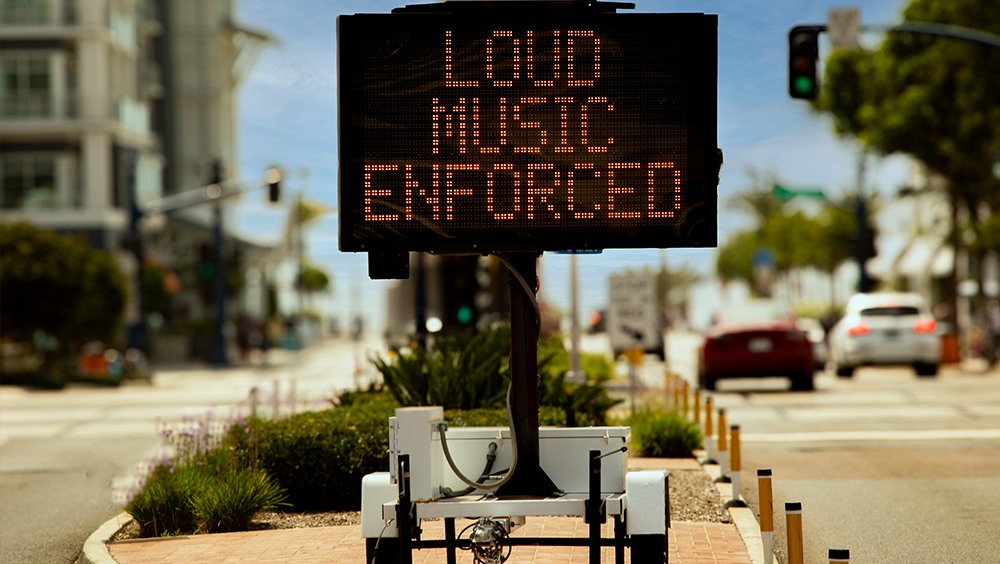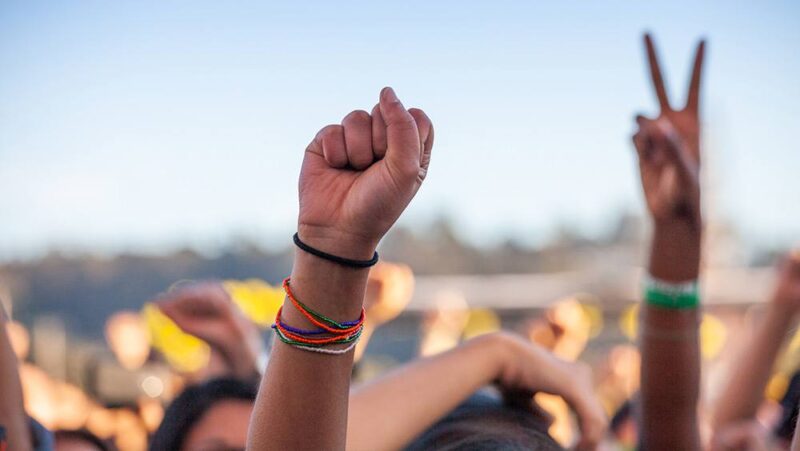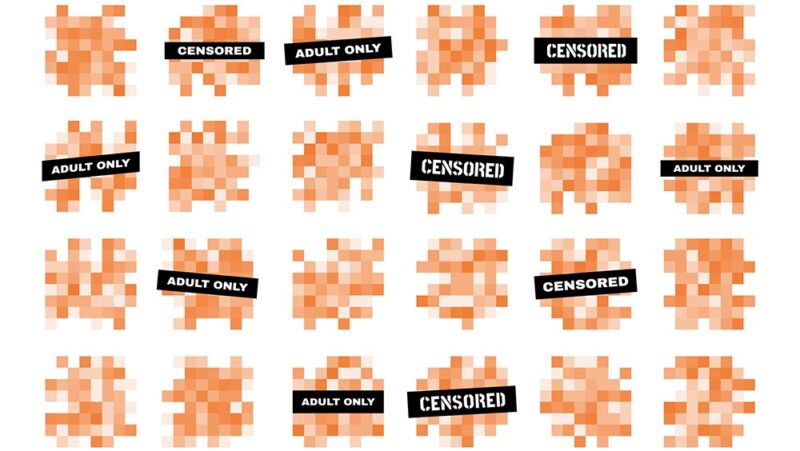What Are Time, Place and Manner Restrictions?

The First Amendment protects free expression, but there are some limits to that protection, including regulations based on “time, place and manner.”
This three-pronged set allows regulation of expression based on those criteria but only if the government does so for reasons unrelated to the content of the speech, has a proven public interest as a goal, and the regulations are no more than the minimum required to support that public interest.
Where can time, place and manner restrictions limit freedom of assembly or free speech?
Time restrictions
Restrictions can be put in place by the government to reasonably regulate the times we express ourselves. Courts have said there are times during the 24-hour cycle when our rights to express ourselves give way to other priorities and rights, from limiting protests in the streets during commuting hours to banning large gatherings in overnight hours near residential areas.
Place restrictions
Restrictions can also be based on the place where the speech occurs. For instance, the government can restrict loud speech in a hospital zone, outside a medical clinic, near a church during services, or outside a school when classes are in session. It can also prevent certain types of businesses, like adult movie theaters, bookstores or strip clubs from opening in certain areas because of the “secondary effects” that result – for instance, if the government can prove that this would bring an undesirable element to a residential area or near a school or church. Place restrictions are based solely on the effect speech might have on the immediate surroundings and people, regardless of what is being said.
Courts have said there are three kinds of places where individual expression may be regulated: traditional public forums, designated public forums, and private or nonpublic forums.
Traditional forums are places like public sidewalks or parks often historically used for gathering and expression. Courts set high standards that must be met before the government can limit freedom of expression here, citing the value to democracy and self-governance of easy access to places for open discussion of matters of public interest. It must also impose only narrow restrictions designed to avoid a specific harm that speech might cause without impacting nonharmful speech.
RELATED: Can you protest on public property?
Designated forums are places where discussion of public matters may take place: Government buildings and grounds, courthouse steps, state fairgrounds and university campuses. These are places that have not historically been open for expression but are made available for expressive activity. The government will be required here to show an important public need if it wishes to limit expression — for example, avoiding disruption of classroom education or of courthouse activities. Again, any restrictions must be written to address only that need and/or avoid that harm while allowing all other speech to occur.
Nonpublic forums include private property and publicly owned spaces devoted to certain kinds of activities, such as military bases, libraries, prisons and local jails. Restrictions on expression in these spaces are the most likely to be allowed without violating the First Amendment. The restriction needs only to be reasonable and viewpoint neutral.
Manner restrictions
And the government may, at times, limit the manner in which we express our views — be that through speech or expressive conduct — such as building an encampment in a national park or on a school campus, restricting the use of loudspeakers, microphones or music above a certain decibel level, limiting crowd sizes without a permit, or prohibiting giant banners or signs on sticks for safety purposes. But again, public officials need to justify the restriction and provide evidence that it is necessary.
RELATED: Protesting on college campuses: FAQs answered
For example, courts have said that the government may set distance or noise level requirements on demonstrations or picketing that involves loud speeches or sounds near a hospital, school or private homes.
Note that these are not mutually exclusive. The government can choose to regulate the time, place or manner of expression. It can also choose to regulate the time, place and manner (or any combination of these).
What are the legal limits on time, place and manner restrictions?
In addition to the general standards for traditional public forums, designated public forums, and nonpublic forums, any restrictions must pass a multipart test, rooted in a 1989 U.S. Supreme Court decision in Ward v. Rock Against Racism:
- The restrictions must be neutral and cannot be based on the viewpoint or content of the expression to be limited.
- Restrictions must be based on a significant public interest, which could range from public safety to protection of the rights of others.
- The government must avoid excessive restrictions that go beyond what’s needed to accomplish the proven public good or avoid harming the rights of others.
- Restrictions must leave open alternative methods of free expression that don’t impinge on the demonstrated public interest or others’ rights.
What are examples of time, place and manner restrictions that meet this test?
Courts likely would approve requiring city permits for demonstrations or rallies on any topic involving a certain number of people – often set at 50 or 100 participants depending on the size of the city or local police resources – or limiting marchers to a remote area.
Also likely to pass muster: Limits on overnight stays in campsites or other public grounds where unsafe sanitation could become a health hazard; or the times of the day when a loudspeaker might be used during school hours or when court trials are likely to be held.
In 1965, in Cox v. Louisiana, the U.S. Supreme Court said it was permissible to ban “a street meeting in the middle of Times Square at the rush hour as a form of freedom of speech or assembly,” given the potential for dangerous circumstances and the burden that would place on others traveling to work – an example of regulating the place of speech.
In a 1968 decision, the Supreme Court overruled a lower court decision in United States v. O’Brien. The lower court said burning a Selective Service draft card was protected free speech. The justices disagreed and said that particular manner of protest threatened the orderly operation of the military draft, and that there were other, easily available methods of publicly criticizing the draft and opposing the war – an example of regulating the manner of speech.
And in 2000, in Hill v. Colorado, the Supreme Court said a state law met First Amendment requirements when it said people had to stand 8 feet away when offering a “handbill or leaflet” outside health care facilities. Justices said the limit does not prevent someone giving out flyers “from simply standing near the path of oncoming pedestrians and proffering the material, which pedestrians can accept or decline.” This is also an example of a regulation based on the place of speech.
When might courts not approve time, place and manner restrictions?
Not likely to pass review: Restrictions that may seem content neutral on their face but in reality are aimed at shutting down a particular point of view or at banning certain kinds of content simply because the subject is controversial, because some people might be offended, or because local officials favor one side or the other.
For example, it would be impermissible to set up a permit process allowing protesters on one side of an issue to march any time of day on any public street using a bullhorn to amplify a speaker’s words, while limiting protestors on the other side of the issue to only certain times of day, use of only certain streets, with no amplification.
Gene Policinski is the senior fellow for the First Amendment at Freedom Forum. He is also author of a new Freedom Forum book on the past, present and future of our core freedoms: “The First Amendment in the 21st Century: From the Village Green to the Village Screen” is available in print, online and as an audiobook.
Modern Protest Songs: 29 Powerful and Controversial Anthems
Is Obscenity Protected by the First Amendment?
Related Content

